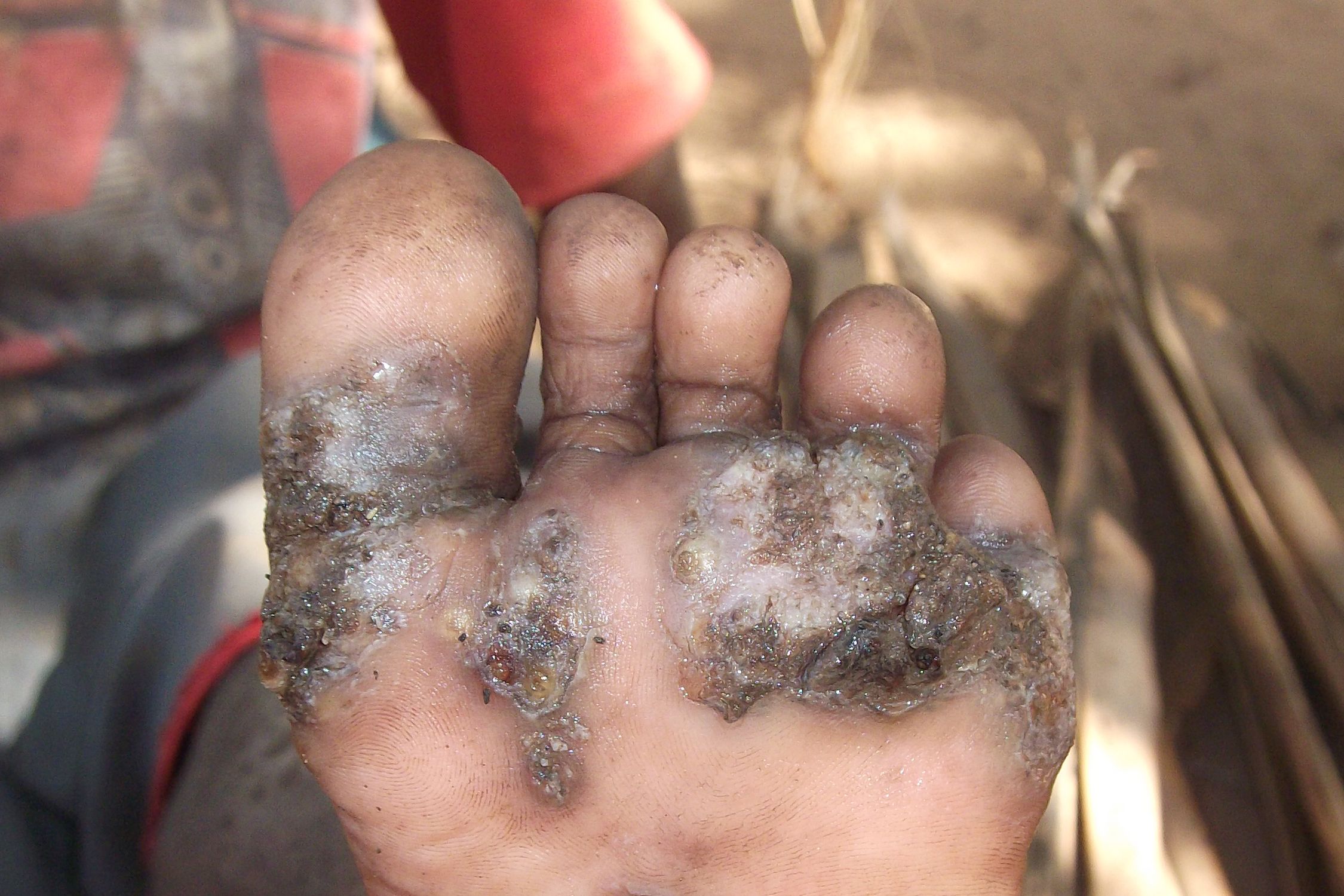Simple interventions could prevent up to 70% of tungiasis cases
Click Here to Manage Email Alerts
Tungiasis, or a parasitic skin disease caused by sand fleas, is common among children in East Africa. Research published in PLoS Neglected Tropical Diseases suggested that up to 70% of infections could be prevented through simple prevention methods like hardening and sealing floors in the home and washing children’s feet with soap.
Lynne Elson, PhD, MPH, BSc, a Wellcome Trust Career Re-entry Fellow at the KEMRI-Wellcome Trust Research Program in Kilifi, Kenya, and colleagues noted that although awareness of tungiasis has grown in East Africa, there are no data on the infection’s epidemiologic characteristics. The researchers said this information is necessary to plan and implement a control program.
Elson and colleagues examined 1,829 students’ feet at eight schools in coastal Kenya for tungiasis.
The overall prevalence of the condition was 48%, the researchers said. Children were more likely to be infected if they were aged younger than 15 years and if they were boys. However, the greatest risk for infection was related to household socioeconomic status.

When examining factors that could limit disease, the researchers found that hardening the floors of children’s sleeping areas could reduce mild to moderate tungiasis by one-third and severe tungiasis by more than 50%. Approximately one-seventh of cases could be prevented by sealing classroom floors. Furthermore, using soap for daily feet washing could reduce disease by one-fifth.
Elson and colleagues noted that installing hardened floors in family homes may be difficult in this region and require government funding because most families affected by the disease cannot afford to pay for cement flooring. Previously, households in this region had hardened floors using a traditional method that included regular smearing with a mixture of soil, cow dung and termite soil, but many families have discontinued this method.
“Clearly, there is a need for research into understanding why house floors are not hardened with the simple, cheap methods currently available, as well as developing alternative, locally available and affordable floor technologies that the most resource-poor families can install themselves,” the researchers wrote. – by Katherine Bortz
Disclosures: The authors report no relevant financial disclosures.
